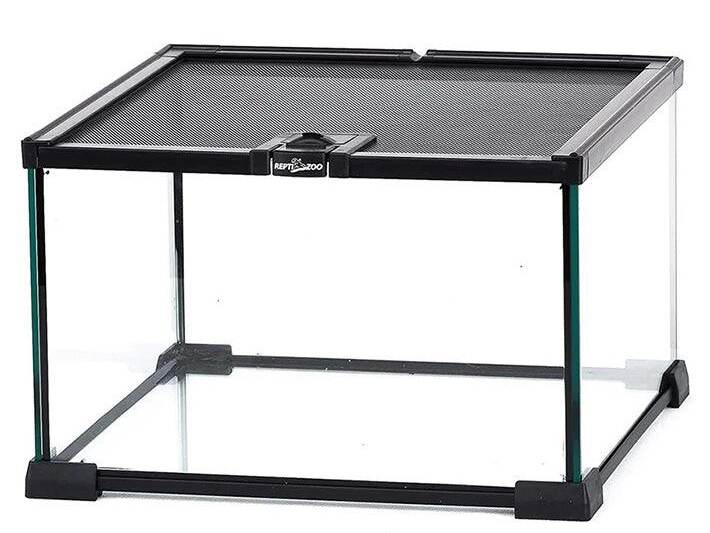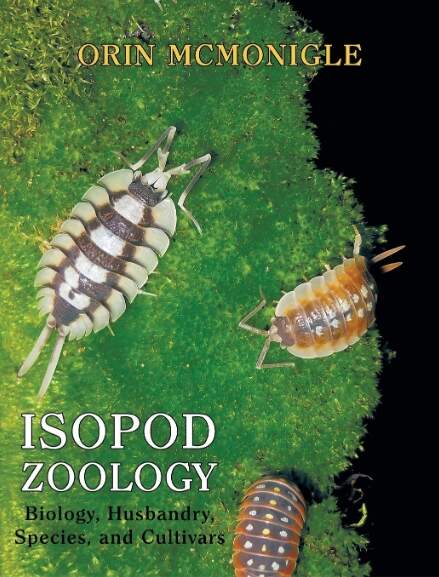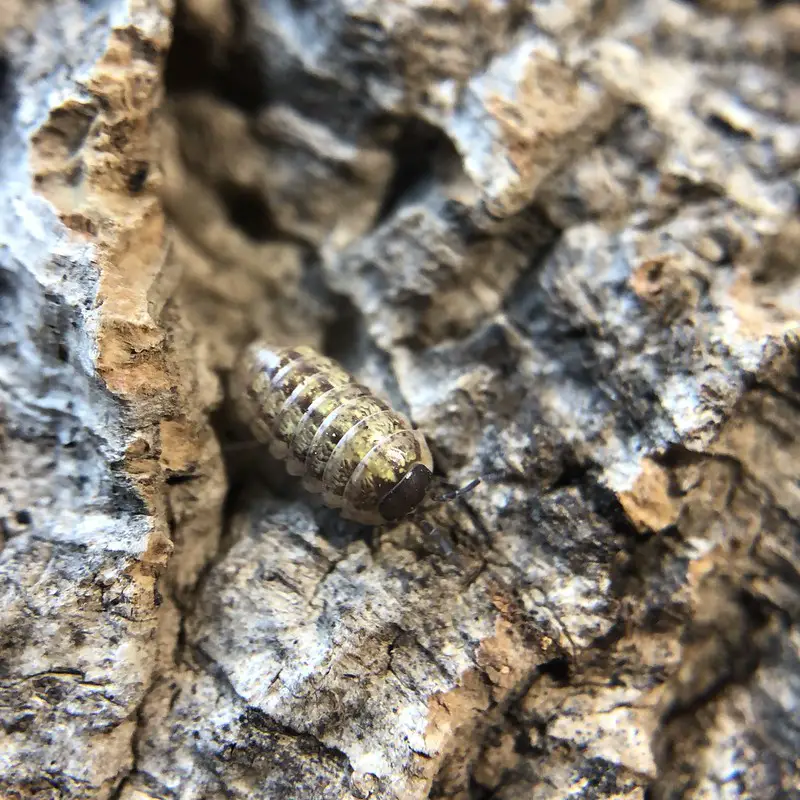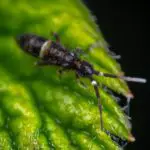Isopods are also known as roly-polies, woodlice or pill bugs. While they are considered pests by some people, isopods are sometimes kept as pets. This guide will teach you how to keep and care for isopods.
To keep isopods, place them in a ventilated container with moist substrates consisting of soil, sphagnums, coirs and sands. Add in a lot of dried leaves as a food source. You can feed the isopods with extra food such as vegetables and dead insects. Keep the enclosure adequately moist at room temperature.
Introduction to Isopods
Isopods are small, terrestrial crustaceans that belong to the order Isopoda. That means they are more closely related to crabs and shrimps than bugs. They are commonly found in damp and dark environments such as under rocks, logs, and leaves.
Isopods are sometimes called the pill bugs, because certain species (particularly from the Armadillidiidae family) conglobate or roll into a ball when disturbed. By doing so, they expose only their hardened exoskeleton to their enemies for protection.
Most isopods are omnivores. They feed mainly on decaying plant and animal matters, and their own droppings too. They occasionally attack live plants, making them pests for farmers. Certain species may attack creatures of smaller sizes, such as springtails. They can be cannibalistic if there is a lack of food or space.
Isopods are mainly nocturnal. They are more active at night, or when it is cooler and humid.
Isopods are kept as pets for 5 main reasons:
- They are easy to care for.
- They are not aggressive and do not bite or sting.
- They can be displayed for educational purposes.
- They help clean up bioactive terrarium.
- They can be used as feeders for predatory pets.
Popular Isopod Species
Trichorhina tomentosa – Dwarf White
As indicated by its name, the dwarf white isopods are white and tiny. They are only 3-5 mm in length, making them one of the smallest isopods.
The dwarf white isopods are the most popular and commonly available isopod species. They are cheap and breed fast, making them ideal as the clean-up crews for many terraria and vivaria.
The dwarf white isopods are all female. They breed asexually.
This species can live for 2-3 years under optimal conditions.
Porcellio scaber – Common Sowbug
If you find isopods in your backyard, they are likely P. scaber, also known as the common sow bug.
There are various morphs of common sow bugs with different colors. The Damaltian morph, for example, is a rare morph with a white body. Like dwarf white isopods, they are easy to keep and maintain.
The common sow bugs are large isopods. They can grow up to 2 cm in length, and live for 2 years.
Porcellio laevis – Dairy Cow
Dairy cow isopods are popular in the hobby due to its unique appearance – milky white body with black spots. There is another morph called the milk back which is the opposite – black body with milky white spots.
This is a large isopod species, measuring between 20-23 mm in length. They can run quite fast when disturbed.
Dairy cow isopods are easy to care for. They are not shy, making them ideal for display.
Generally, dairy cow isopods can live for 2 years.
Porcellionides pruinosus – Powder Isopods
The powder isopods are medium size isopods measuring around 1 cm in length. They can live for 1 to 1.5 years in captivity.
Porcellionides pruinosus are highly sought-after in the hobby because of their beautiful colors and active nature. Unlike some species, they don’t always hide in the darkness, making them ideal for display.
There are various color morphs of P. pruinosus – the powder blue, powder orange, Oreo crumble, white out, etc.
Armadillidium maculatum – Zebra Isopods
Armadillidium maculatum is a species of isopods with a zebra-like pattern on their body. Although they are slow-moving, they are rather active. Like other Armadillidium spp, zebra isopods can roll into a ball when disturbed.
Zebra isopods can reach 1.5-1.8 cm in body length. They live for 2-3 years.
Armadillidium vulgare – Common Pill Bugs
Armadillidium vulgare is named common pill bug because they are common in Europe and the US, and they roll into a ball when disturbed.
The common pill bugs usually have a dark body with yellow markings.
While this species is common, there are some rare, expensive morphs maintained by hobbyists, such as the Magic Potion Japanese line with a paler body.
The common pill bug is a medium to large species. A fully grown adult can reach 18 mm in body length, and their average lifespan is 2 years.
Preparing the Enclosure
Technically, isopods can be reared in any type of enclosure. For display, it is best to keep them in transparent enclosures made of glasses. You can use acrylic tanks, but it may warp due to excessive moisture in isopod enclosures. Otherwise, you can also keep isopods in any plastic containers.
A lid is required for the enclosure for 2 reasons. First, it retains moisture in the enclosure. Second, it protects your isopods from pests and curious kids or pets.
A glass enclosure has slippery surfaces that make it difficult for isopods to climb. Moreover, isopods tend to hide underneath leaves and substrates instead of exploring around. This makes escape unlikely.
Make no mistake, isopods do climb on glasses. But if you can maintain a suitable habitat for the isopods, there is little motivation for them to escape.
Having said that, your isopods may leave their enclosure by accident, especially if the enclosure walls are low, and there is dirt on the inner enclosure wall.
As a general rule of thumb, allow 5 to 7 inches height between the substrates or decors touching the enclosure wall and the opening. This makes it harder for the isopods to climb out. Cleaning the inner wall of the tank regularly to make it smooth can also reduce the chance of your isopods escaping.
Make sure your enclosure is well ventilated. A glass enclosure with a mesh lid should do the job. For acrylic or plastic enclosures, you can drill some vents along the walls.
If you made a big hole on the enclosure for ventilation, you can glue a mesh on the vent to prevent pests from entering the tank. But, it is entirely optional.
Substrates
Substrates are crucial for isopods, because that’s where isopods spend most of their time. They provide both food and the required moisture to the isopods.
Mix soils, coirs and some sands evenly. Add crushed egg shells to provide calcium, and lots of dried leaves for food.
Pour the substrates into the enclosure until it reaches at least 3” depth. The deeper the substrates, the less likely they dry up. This will ensure a more consistent humidity within the enclosure.
Prepare some sphagnum moss, about ⅕ of the substrate volume. Rehydrate the sphagnum by dipping them in clean water. Take out the sphagnum and squeeze them lightly to remove excessive water.
Add and mix the rehydrated sphagnum moss with the substrates at one side of the enclosure. Sphagnum can retain a huge volume of water, providing the required humidity to your isopods.
By putting the rehydrated sphagnum moss at one side of the enclosure, you create a moisture gradient within the substrates. This allows the isopods to move to the places where they are most comfortable with.
Mist all substrates with water until it is moist, but not overly wet. If you are keeping species from drier habitats, such as Porcellio magnificus, you should reduce the moisture.
If you want to learn more about preparing high quality substrates for isopods, I recommend checking out The Complete Isopod Living Soil Substrate Guide from RubberDuckyIsopods.
Decorations
You can decorate your isopod tank with barks or stones. They love to aggregate underneath those things.
For display purposes, you can decorate your isopod tank with live plants such as mosses. However, note that isopods do feed on live plants, and they will destroy plants in a few days if the population is big. Avoid having live plants in your breeding tank.
Introducing Isopods to a New Tank
Isopods in the market are often delivered together with wet mosses. Simply pour everything, including the mosses and substrates, into your new tank.
You can keep isopods of different species in the same tank for display purposes. In the long run, though, one species may outcompete the other. You risk losing the more expensive or preferred species. Hence, you should not keep different species together if you intend to breed them.
Feeding Isopods
If you have the budget, and willing to spend more money for your isopods, consider getting pre-mixed, high quality substrates from
Isopods feed on a wide variety of food of plant and animal origins. They also feed on their own droppings.
In total, isopods feed on the dried leaves, sphagnum and other decaying materials in the substrates. Many hobbyists give their isopods fresh vegetables from time to time as extra food. You can add some soaked dog or cat biscuits, dead insects, and even tiny live insects as sources of protein.
To ensure your isopods have sufficient food, add dried leaves into the substrates on a regular basis. You should also add sphagnum if they are eaten by your isopods.
If you have more budget to spend, consider getting premium isopod food from RubberDuckyIsopods.com. Their bundle pack contains a wide range of nutrients required to make your isopods flourish.
Temperature, Water and Lighting
Isopods generally do well at room temperature. They do not require additional lighting, since most of them are nocturnal. Having display LEDs, though, can help you observe them better.
Keep the substrates and sphagnum moist by misting from time to time. Isopods require high humidity to survive. However, do not mist until the substrates are soaking.
Recommended Supplies
Here’s my recommended supplies for your isopods. Note that I get a small commission when you buy the items through the links in this page. This helps me to maintain the site without incurring additional costs to you.

ReptiZoo 12x12x8″ Glass Tank
A glass tank is ideal for displaying and rearing isopods because it is transparent, and it doesn’t warp. The mesh lid ensures good ventilation and prevent molds.

Isopod Zoology: Biology, Husbandry, Species, and Cultivars
Written by Orin McMonigle, this is the bible for anyone who want to learn more about keeping isopods. It sheds lights on everything you need to know about your isopods so that you can give them better care.
Others
Molting Care
Unlike insects and arachnids, isopods do not require special care when they molt.
Isopods molt in 2 phases. The posterior half of their body (usually after the 4th or 5th segment) starts to molt first. After molting is completed at the posterior half, the anterior half will continue to molt. Because of this unique behavior, isopods can still move around when they molt.
The newly molted body part is pale in color, but not white like what we observe in newly molted insects.
Shedded skins are usually consumed by the isopods, so you might not find them.
Breeding
It is easy to breed isopods. Simply put a few isopods in a large enclosure with sufficient food and moisture, and they will breed eventually. Certain species are exclusively females, and breed asexually through parthenogenesis.
For isopods that breed sexually, you need both male and female. While it is tough to identify male and female isopods, likely there will be some male and female in a group of 10-20 isopods.
Keeping Isopods in a Tarantula Tank
Isopods are cleaning crews that can be kept together with tarantulas that require high humidity, such as the goliath bird eater. They feed on the leftovers, such as cricket legs and bolus, reducing the need to clean the tank after the tarantula has her meal.
While tarantulas are carnivores, they usually ignore isopods because they are just too small for them.
Keeping Isopods with Mantis
Since isopods can be kept together with tarantulas, you might be tempted to keep them with mantis. However, isopods should not be kept with mantises. Your mantis will annihilate the whole isopod population in 2-3 days.



